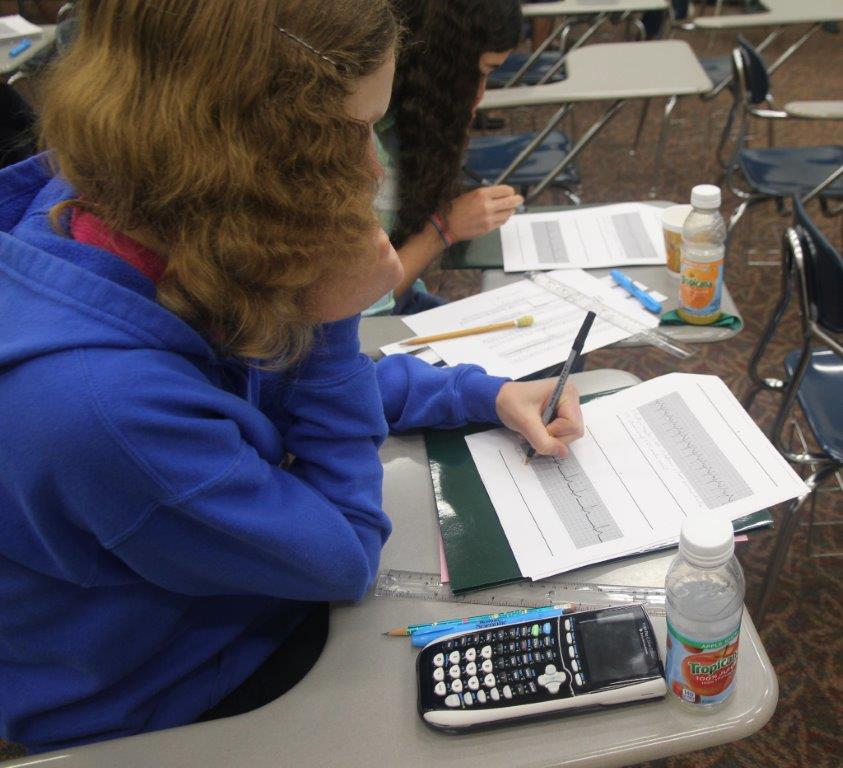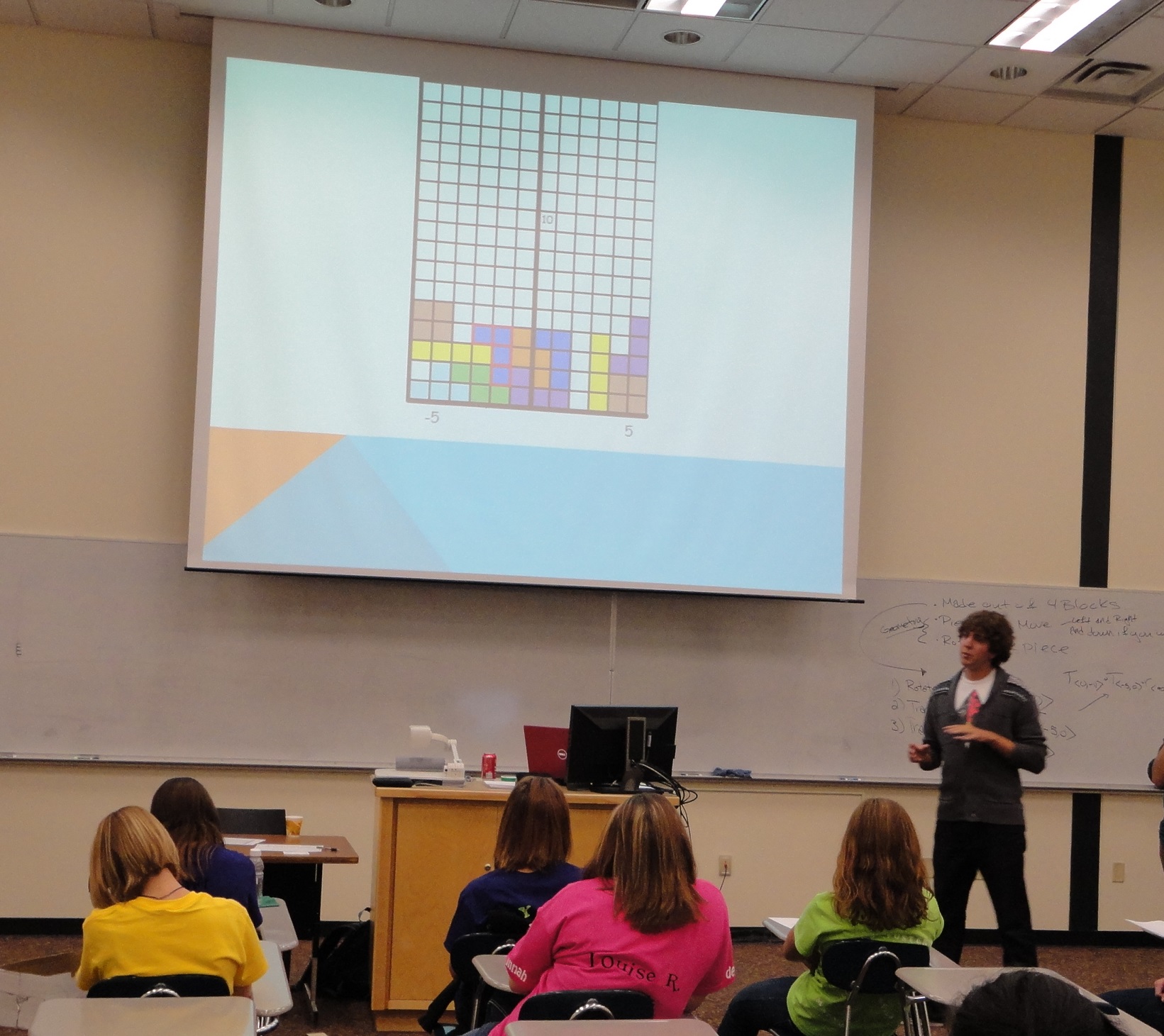The Enigma was a machine used by the German military during World War II to encode and send ciphered messages. The encrypted messages were broken by the Allies using mathematical techniques.
In this workshop, each student was given a paper Enigma simulator. After the explanation of how the encryption works, there was a discussion on the flaws of the system, the mistakes of the officers setting up the daily code, and on ways to decipher a secret message whose beginning we know. The students were able to decipher the message, and at the end of the day they could take the Enigma simulator home to continue encrypting messages.
The photo on the right shows the paper version of the plugboard and three rotors of an Enigma machine.







